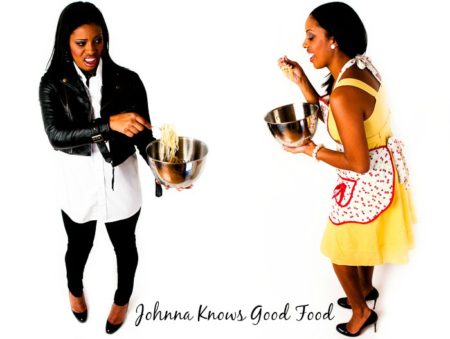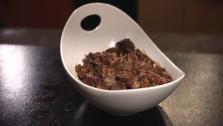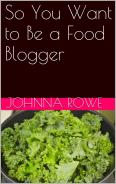Secrets of brewing the best cup of coffee
Do you need the energizing aroma of a cuppa joe before climbing out of bed and greeting the sunshine? Or perhaps, brewing a fresh cup of coffee is the only motivation to disturb your slumber and start a new day? We all love coffee for different reasons. Some have a full-blown caffeine addiction, while others crave the caramelized aroma of freshly roasted coffee beans. Which one are you?
Have you ever wondered why coffee bottles don’t carry the date the beans were roasted on the label? It’s the worst kept secret of the instant coffee industry, for manufacturers don’t want to scare java lovers away. Either way, you cannot brew the best cup of coffee if you’re buying instant coffee and preground beans.
Instant coffee languishes on the shelf for months before a naïve coffee enthusiast scoops it up and brings it home. To brew the best cup of coffee, you have to do away with instant jars and invest in fresh, whole beans. Keep reading to pick up some valuable tricks to elevate your coffee brewing skills.
Invest in Quality Whole Beans
Whether you’re an Arabica lover or a Robusta enthusiast, starting with whole beans is the secret to brewing the perfect cup. Instant coffee mix and preground coffee bags do not retain the freshness and flavor that whole beans deliver. Starting with fresh, whole coffee beans will help you create a personalized blend tailored to your taste buds.
Did you know that consuming coffee within a month from the day you roasted the beans is ideal? The beans reach the epitome of their flavor within days of roasting. Popular coffee chains and baristas always roast their beans in small batches right before serving.
Once you decide to switch to whole beans, you need to learn how to store them properly to preserve their freshness. Most people invest in airtight mason jars, but coffee lovers prefer vacuum-sealed, one-way valve containers. We suggest keeping your roasted beans in a different jar every time you roast a new batch.
Striking a Balance between Over-extraction & Under-extraction
How does one ensure the perfect extraction of the rich, caramelized coffee flavor?
The magic flavor is released when boiling water absorbs the compounds and oils from the coffee beans. Slowly, the chemical compounds of the ground bean start harmonizing with water, giving it a beautiful color and nutty flavor. It’s crucial to note that beans deliver a specific amount of caffeine, flavor, and aroma in each batch. The goal is to extract maximum value from each batch you roast to enjoy perfection in the final product. But how do we avoid over-extraction?
Excessive water and lesser grounds will give your coffee a sharply unpleasant and overly bitter taste. Over-extraction occurs when the water quantity overpowers the chemical compounds carrying the flavor and aroma. In contrast, under-extraction occurs when there isn’t enough water to dissolve the aroma and flavor compounds within the beans. Under and over-extraction will turn your coffee into a sour, bitter, and flavorless concoction.
So, how does one find the perfect mix for a savory cuppa joe? Let’s find out next!
The Perfect Ratio of Coffee & Water
The secret to brewing the best cup of coffee lies in the perfect ratio between coffee and water. The ideal balance is 16 parts water and 1 part coffee. You don’t want to disrupt the balance by adding too little coffee and too much water, or vice versa. Most people naively assume that adding more coffee grounds will make their cuppa stronger and richer, and that’s a mistake.
Adding more coffee will complicate extraction instead of giving you that caffeine buzz you’re craving. It will reduce the flavor profile of the cup, and you will end up blaming the expensive coffee you so lovingly purchased.
The problem doesn’t lie in the coffee, but how you’re brewing it. Maintaining the perfect ratio between water and coffee is crucial to extract the right amount of flavor and caffeine. However, several other factors come into play while fixing the ideal cup. For instance, the soaring water temperature softens the grounds and initiates the chemical process that releases flavor and color. Any fluctuations in the water temperature will ruin this process.
Factors like the cleanliness of the coffee machine, size of the coffee grounds, and brewing time also matter significantly. But if you’ve started brewing with the perfect coffee to water balance, you don’t have to worry much about these factors.
Grinding Coffee the Right Way
Most people grind their coffee supply weeks or months ahead in advance. It’s an efficient strategy to avoid running late to work every morning and have a generous supply of caffeine at your disposal. But this strategy doesn’t work when preserving and enjoying the taste and flavor.
Seasoned baristas argue that coffee starts losing its aroma and flavor within half an hour after grinding the beans. So, we advise grinding the beans right before brewing to extract maximum caffeine, color, and flavor. Instead of grinding large batches, use small quantities to cover your family’s supply of morning coffee.
The way you grind your coffee beans also significantly impacts the flavor and caffeine concentration. Coarse grinding weakens the flavor and caffeine profiles, resulting in over-extraction and a bitter taste. Finely ground beans also lose their flavor and become highly acidic. The perfect cup lies in a medium-fine grind, and we suggest using a manual hand mill.
Final Thoughts
The secret to fixing yourself the perfect cuppa joe lies in treating the beans with love. Consider the grinding and brewing labor of love, working towards extracting the perfect amount of flavor and color. Instead of hurrying through the process, make smaller batches and take your time while grinding and brewing.
Category: Food.Fun.Stuff.









